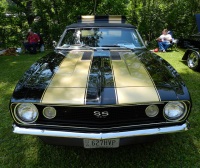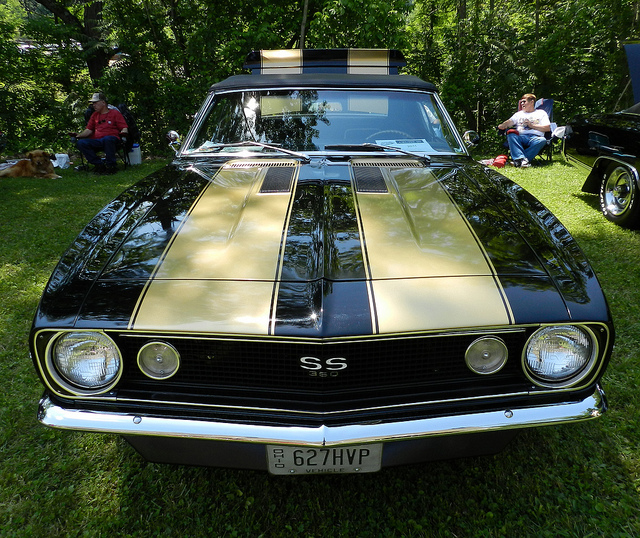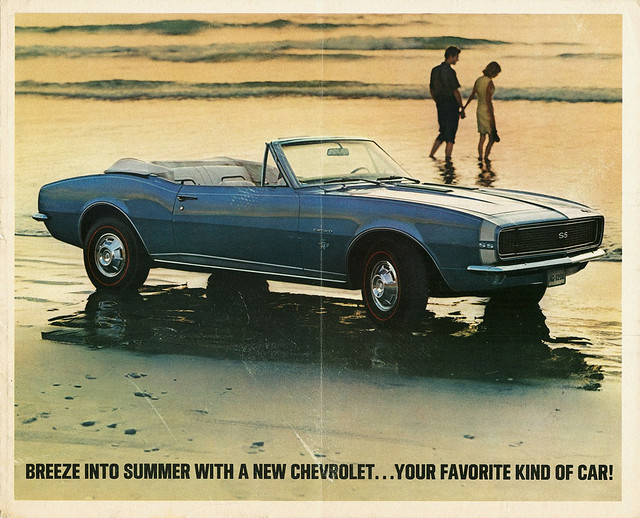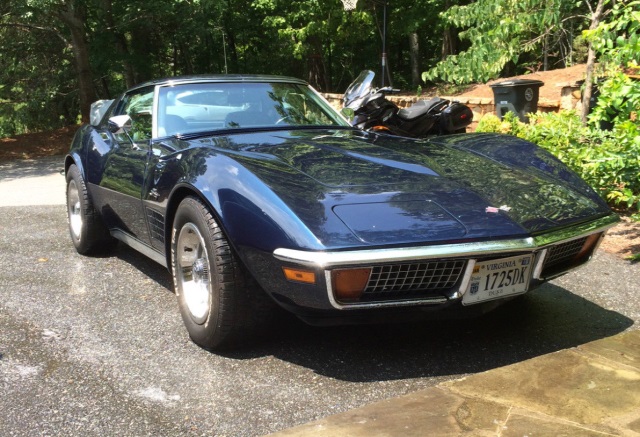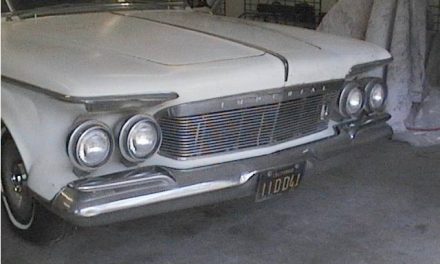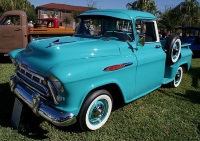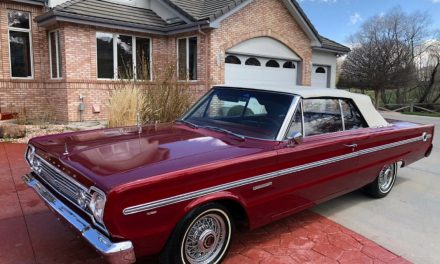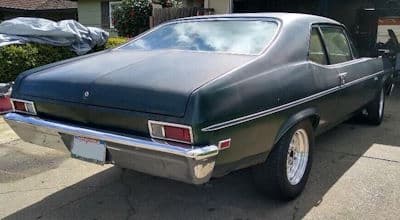The Chevrolet Camaro started life as a compact car that was introduced to North America in 1967 by the Chevrolet Motor Division of General Motors and was quickly seen as being in direct competition to the Ford Mustang.
The Camaro is technically considered compact, at least by the time period it was introduced, the Camaro and even the entire Mustang class, would soon be called the pony car.
The Camaro’s name was not supposed to have any meaning. However, with a little bit of research the General Motors company soon found the word was a French slang term for companion or friend. In some of the different car magazines at the time the Camaro was given a code name. The code name that was given was Panther, but when the “Panther” was introduced the name was changed to Camaro.
[wordbay]1967 camaro[/wordbay]
Here are the four distinct generations that were present for the production of the Camaro.
The First Generation Chevrolet Camaro For 1967
The mechanicals of the Camaro in this year were shared with the Chevy Nova, but the Camaro had a featured unibody structure. Chevrolet would offer the Camaro in only two body styles that year. The two body styles were the coupe and the convertible. The Camaro would also include 40 dealer and 80 factory options for people to choose from in addition to the three main packages that were available.
The RS Package is the one that included cosmetic differences like the badging that showed the car as an RS model, hidden headlights, a blacked out grill, different taillights, and even having different types of interior trim available.
With the SS package people would find a modified 350 V8 engine. This was the first time Chevrolet ever offered a 350. The SS model also had an L35 396 inch big block motor that was available. With the SS model people would also get the non-functional air inlets that were located on the hood, the specialized striping that people love to see and even a blacked out grill.
With the SS and the RS packages it was possible to get both of these on the same Camaro. This would be called the RS/SS Camaro and it would be a combination package.
In 1966 the powers at Chevrolet decided to offer a Z28 option and this was brought about for people to find on their own. This options package was not shown in any of the sale literature so most buyers did not even know about it. The only way to get the Z28 package was to buy a Camaro and order it with the Z28 option. This option would allow people to have front disc brakes, power steering, and included a 4 speed transmission made by Muncie. As far as the motor goes the Z28 pacage would have a unique 302 inch small block motor that made it easier for drivers to compete in the Club of America Trans Am racing series. This race required the motors to be of 305 inches or smaller and available to the public. The motor for the Z28 was advertised to have 290 horsepower on the hood and it was possible to take the Z28 and combine it with the features of RS package, but only 602 of the Z28s were sold.
The second generation of the Camaro was introduced in 1970-72.
The larger and easily the second generation of the Camaro was features with a very sleek body and a suspension that was vastly improved. The 1970-1/2 Camaro would debut as a 2 2 coupe and no convertible model available at all. Most of the drivetrain would be a carry over from the 1969 model year. The only different was the 230 inch six cylinder motor would be replaced with the 250 inch motor as the base motor and have a 155 horsepower rating.
The best motor for the Camaro would be the L-78 which is a 396 inch motor that is a V8 and rated at 375 horsepower. The 1970 model year would see the 396 actually start to displace the 402, but Chevy choose to keep the 396 badging. Chevrolet would also offer 2 different types of 454 motors and were listed early on spec sheets, but never brought to production. Chevy would also offer the Rally Sport as the base package, the Super Sport and even the Z28 packages yet again.
When 1972 rolled around the Camaro would suffer a couple of major problems. The first was a UAW strike at one of the GM assembly plants in Ohio that would keep the cat out of production for 174 days and lead to 1100 Camaros being scrapped because htey did not meet the 1973 Federal Safety standards. Some of the higher ups at GM considered dropping the Camaro line from production altogether. However, the Camaro overcame this competition and would product 68,656 Camaros in 1972.
The third generation of the Camaro would come out in 1982.
With the 1982 model year the Camaros would start to show a factory fuel injection, a four speed automatic transmission, and a five speed manual transmission. The four speed manual would come in 1982 and some of the 1983-84 models. The models would also find 15 or 16 inch rims and a hatchback body style. The Camaro would also have a 4 cylinder motor because of gasoline concerns. Something else to note is the Z28 would be the Motor Trend magazines car of the year in 1982.
In 1985 Chevrolet would also introduce a new Camaro model, the famous IROC-Z. The IROC-Z Camaro would have an upgraded suspension, a special decal package, and even a tuned port injection system that was take from the Corvette motors. The better suspension in the third generation also helped the Camaros corner better than the previous generations.
Generation 4 began in 1993.
The fourth generation of the Camaro would start in 1993 and last until 2006. The fourth generation was the final generation from the Van Nuys, California plant and was moved to the one in Ste. Therese in Quebec.
The new Camaro design would have a lightweight plastic body panels that would be over a steel frame. A better suspension was also introduced to help improve the Camaro line.
Model years 1993 until 1997 the Camaro would have the LT-1 engin, which was the same Generation II motor that was a small block in the Corvette, but not as highly tuned.
In 1996, the Camaro would resurrect the long discontinued SS model and that was brought back to sales in 1998. The all new LS-1 motor would be a generation III motor that would be offered on the SS and Z28 Camaros, but would also mark the end of the Generation I small block V8, that had roots tracing back to 1995. Unfortunately, the sales were well below expectations and would see the Camaro cease production in 2002. The last year of the Camaro was also the 35th anniversary for the Camaro and would be marked by the milestone of the anniversary car modified from the factory by SLP, but it was only available on the SS model.
The 5th generation Camaro, back for 2010.
The Camaro was totally redesigned and reintroduced in 2010, but this model will be discussed in a later issue of oldcarshopper.com.
Photo provided by Don O’Brien.
Advertisement provided by Alden Jewell.

